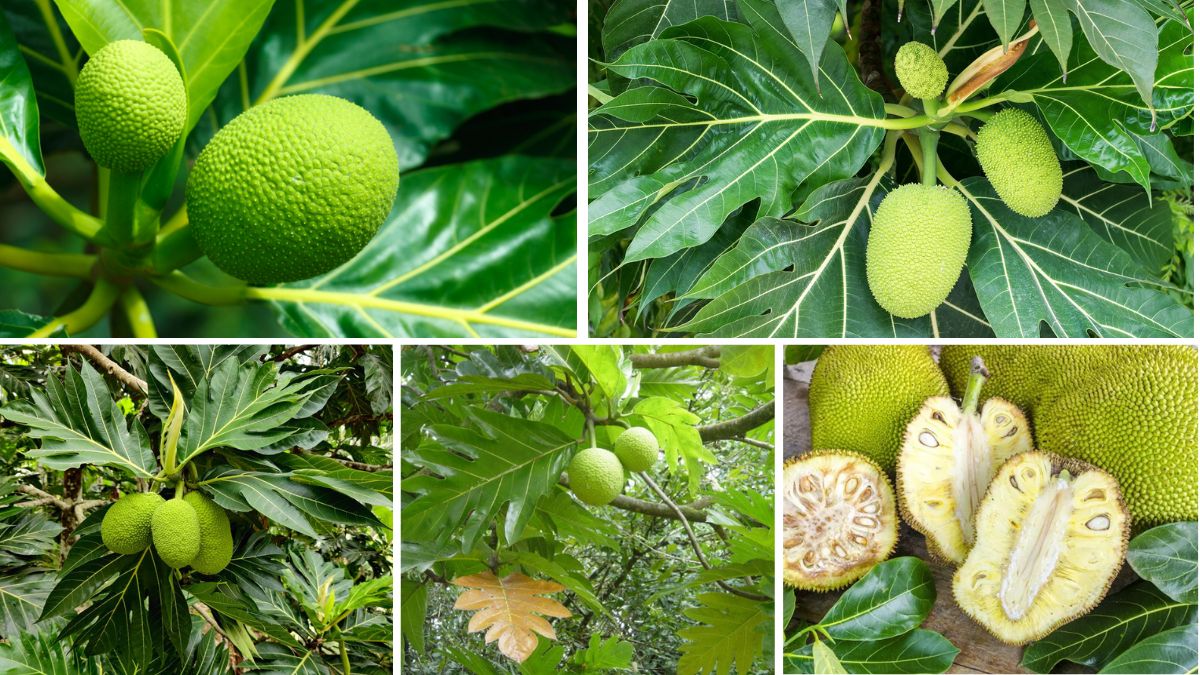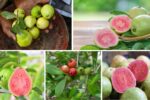Breadfruit (Artocarpus altilis) is a tropical fruit tree that has been a staple food source for centuries, particularly in the Pacific Islands, the Caribbean, and Southeast Asia. Known for its starchy, potato-like texture and versatility in cooking, breadfruit is an essential part of traditional diets and local economies. Its ability to thrive in tropical climates, high yield, and nutritional richness make it an attractive crop for both domestic consumption and export.
This article explores the countries famous for breadfruit production, their cultivation practices, nutritional importance, and the role of breadfruit in food security and economic development.
Breadfruit: An Overview
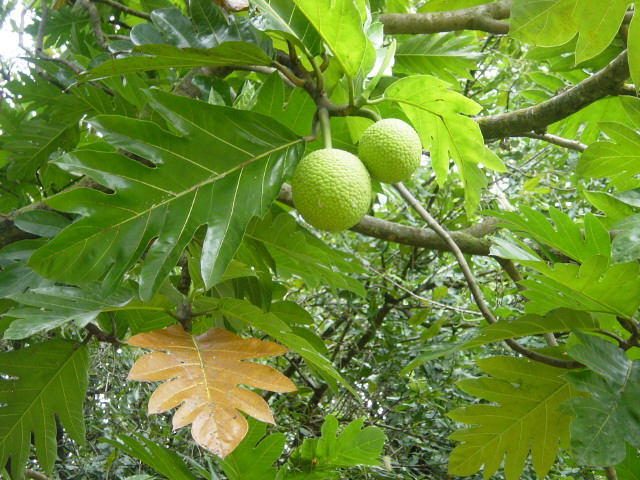
Breadfruit belongs to the Moraceae family and is closely related to jackfruit and mulberry. It produces large, round to oval fruits that can weigh between 1 to 5 kilograms. Breadfruit trees are hardy, can grow in diverse tropical soils, and require minimal maintenance, making them suitable for small-scale and commercial farming alike.
Nutritional and Economic Significance
Breadfruit is a rich source of complex carbohydrates, dietary fiber, vitamins, and minerals:
- Carbohydrates: Provides energy similar to potatoes and rice.
- Dietary Fiber: Supports digestion and maintains gut health.
- Vitamins & Minerals: Contains vitamin C, potassium, calcium, and magnesium.
- Economic Value: Supports rural livelihoods through domestic sales, local markets, and export opportunities in fresh, frozen, or processed forms.
Top Breadfruit-Producing Countries
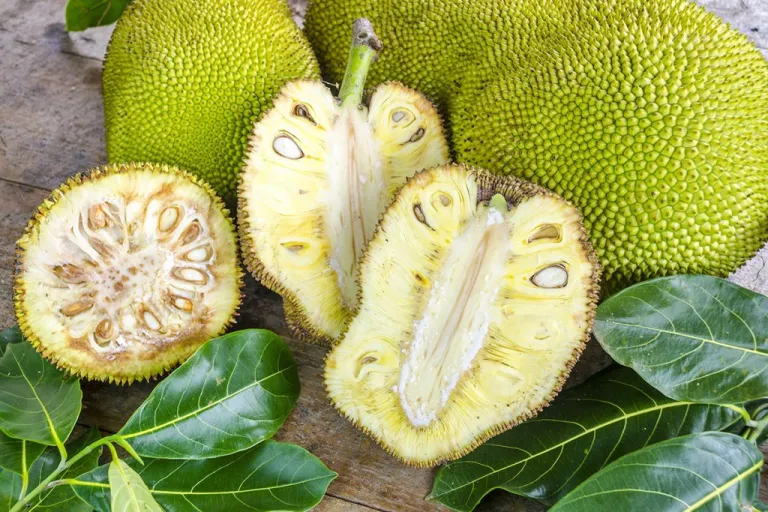
1. Jamaica
Jamaica is one of the most renowned breadfruit-producing countries in the Caribbean. The fruit was introduced to Jamaica in 1793 by Captain William Bligh from Tahiti. Today, breadfruit is an integral part of Jamaican cuisine and culture.
Production Highlights:
- Cultivated widely across parishes such as St. Ann, St. Mary, and Portland.
- Breadfruit trees are grown in both home gardens and commercial plantations.
Uses:
- Boiled, roasted, baked, or fried in traditional dishes.
- Processed into chips, flour, and canned products for local and international markets.
Exports:
- Jamaica exports breadfruit mainly to the United States, Canada, and Europe.
- Frozen and canned breadfruit products are increasingly popular due to their convenience.
2. Philippines
The Philippines is a major breadfruit producer in Southeast Asia, locally known as “kamansi” or “rimas.” The fruit grows abundantly in Luzon, Visayas, and Mindanao.
Production Highlights:
- Thrives in tropical climate with high rainfall.
- Breadfruit cultivation is common in home gardens and community farms.
Uses:
- Cooked as a staple food or ingredient in soups, stews, and desserts.
- Breadfruit flour is gaining popularity as a gluten-free alternative.
Exports:
- The Philippines exports breadfruit and breadfruit-based products to Asian markets, including Japan, South Korea, and Singapore.
3. Fiji
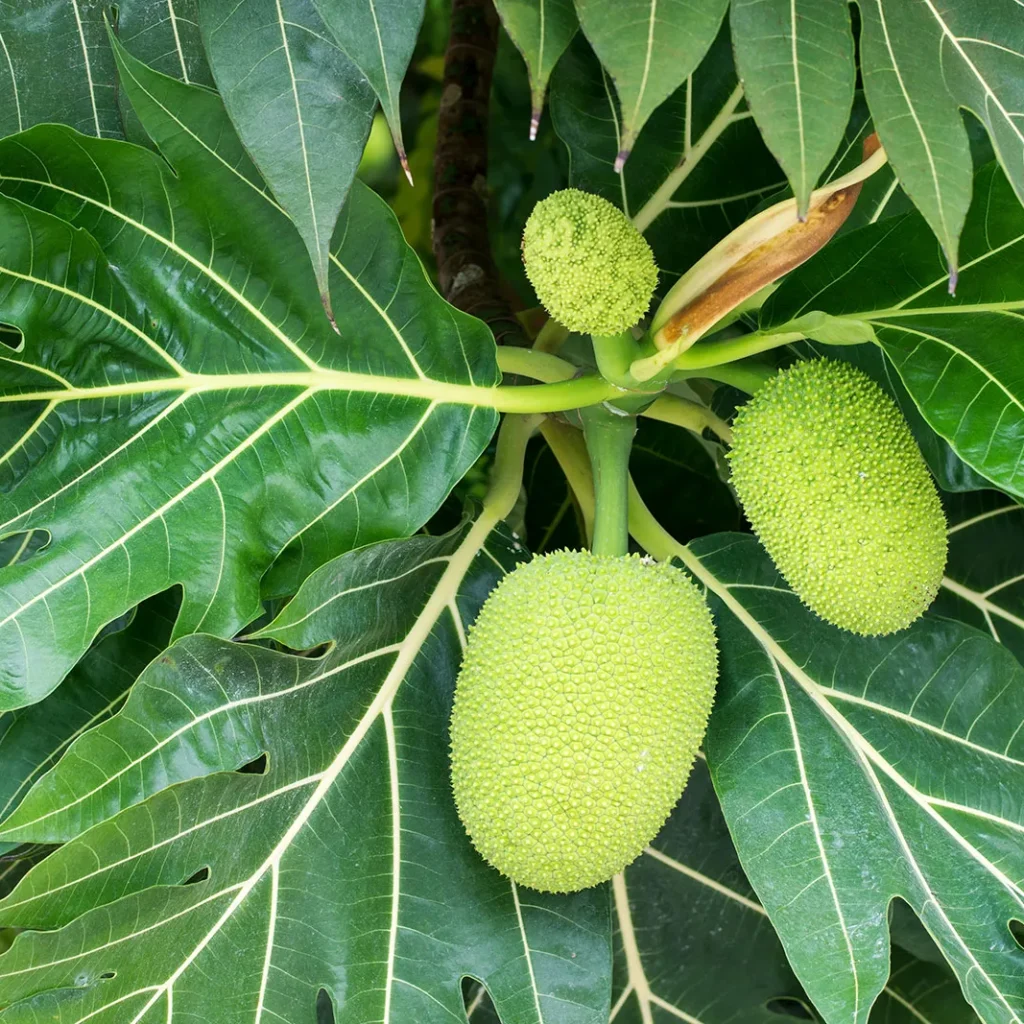
Fiji is famous for breadfruit production, where the fruit is a staple in daily diets and traditional ceremonies. Breadfruit, locally called “uru,” is central to Fijian culture and nutrition.
Production Highlights:
- Grown across all islands, particularly in Vanua Levu and Viti Levu.
- Breadfruit trees thrive in volcanic soils and humid tropical climates.
Uses:
- Boiled, roasted, or made into fritters and traditional dishes.
- Used in community food programs to improve nutrition and food security.
Exports:
- Fiji exports fresh breadfruit to New Zealand and Australia.
- Processed products such as frozen breadfruit and chips are gradually entering international markets.
4. Papua New Guinea
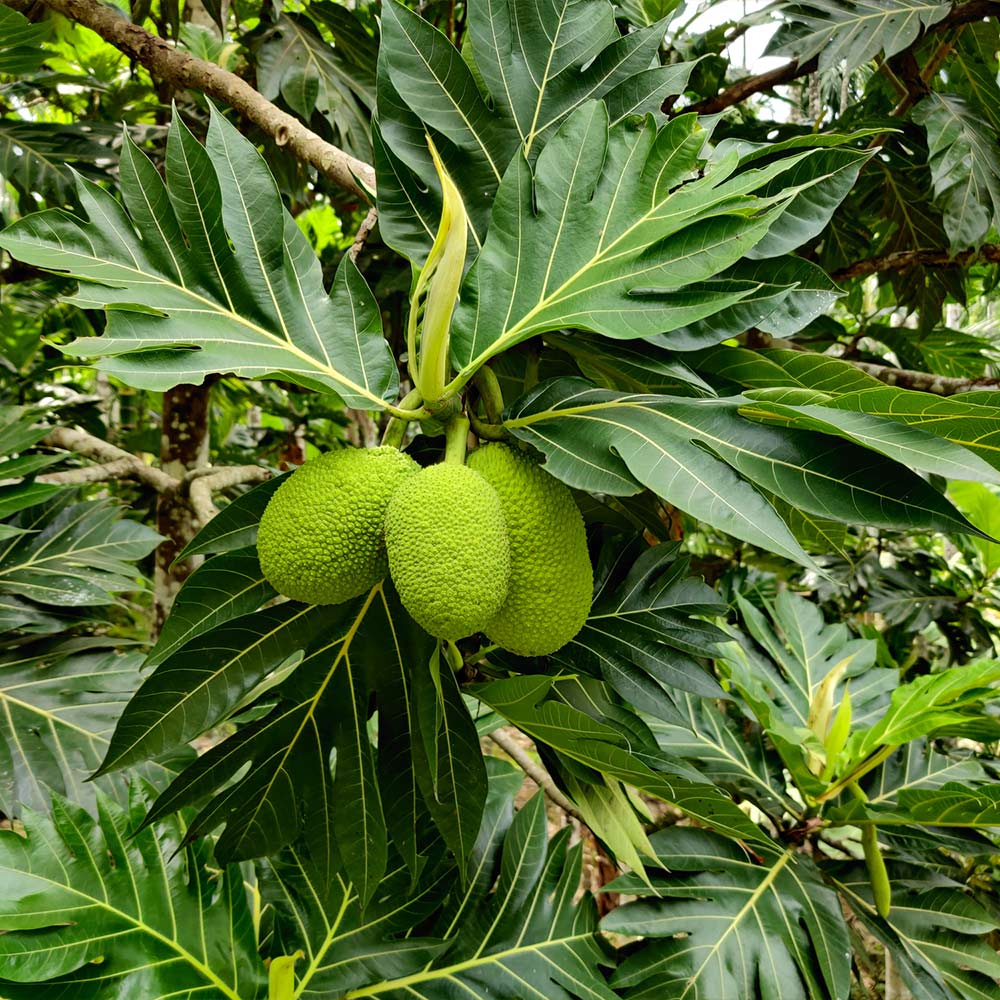
Papua New Guinea (PNG) is another key breadfruit producer in Oceania. The fruit grows in lowland tropical areas and is vital for both subsistence farming and local trade.
Production Highlights:
- Breadfruit trees are grown in home gardens and small community plots.
- High rainfall and fertile soils contribute to excellent fruit yields.
Uses:
- Roasted, boiled, or used in traditional dishes with coconut milk.
- Often incorporated into community nutrition programs.
Exports:
- Limited export activity, mainly to neighboring Pacific countries.
- Focus remains on domestic consumption and food security.
5. India
In India, breadfruit cultivation is concentrated in the southern states of Kerala, Tamil Nadu, and Karnataka. It is locally known as “ulu” or “kaithal.”
Production Highlights:
- Grows in tropical and subtropical climates, often in homesteads and village gardens.
- Thrives in well-drained soils with moderate rainfall.
Uses:
- Cooked like potatoes in curries, snacks, and fritters.
- Processed into chips, flour, and bakery products.
Exports:
- India’s breadfruit exports are limited but growing, mainly to Middle Eastern countries.
- Domestic consumption remains the primary focus.
6. Puerto Rico
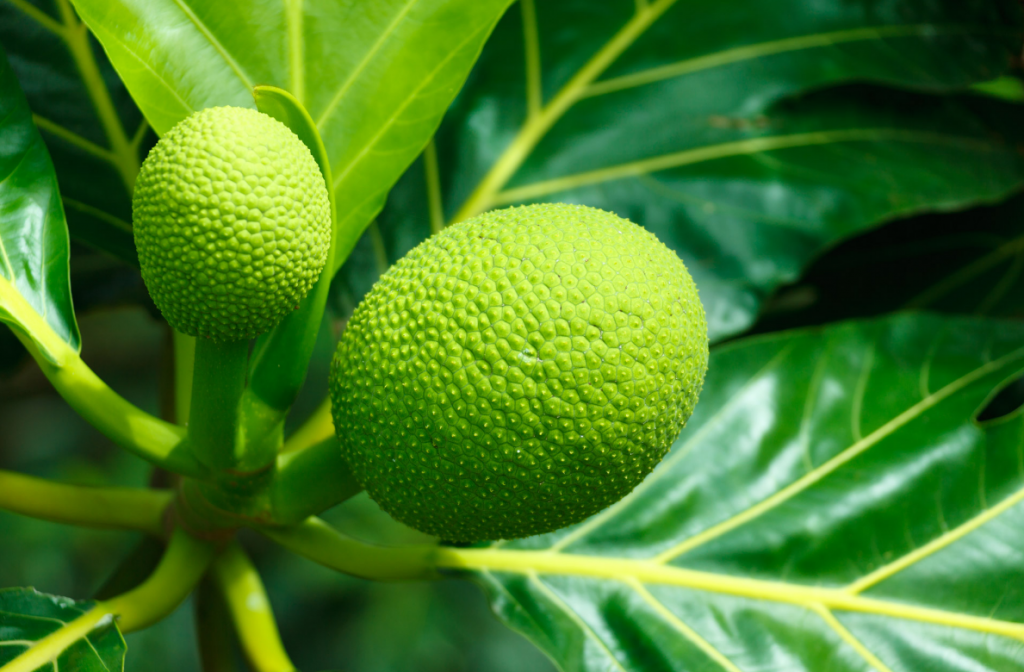
Puerto Rico is a significant breadfruit producer in the Caribbean, where the fruit is culturally and economically important.
Production Highlights:
- Grown across the island, especially in mountainous and coastal regions.
- Trees are low-maintenance and provide fruit year-round.
Uses:
- Roasted, boiled, or fried for traditional dishes.
- Used in soups, stews, and desserts.
Exports:
- Breadfruit exports are primarily to the United States mainland.
- Frozen and processed products are increasing in popularity.
7. Other Notable Producers
Several other countries contribute significantly to global breadfruit production:
- Hawaii (USA): Breadfruit was introduced in Polynesian migrations and is now grown on multiple islands. The USDA promotes breadfruit as a sustainable crop.
- Samoa and Tonga: Breadfruit is a traditional staple crop with cultural and dietary significance.
- Brazil: Breadfruit is cultivated in northern and northeastern regions for both domestic consumption and processing.
- Caribbean Islands (Trinidad, Barbados, St. Lucia): Widely grown for local markets and traditional cuisine.
Global Breadfruit Trade and Market Trends
Export Dynamics
- Caribbean countries like Jamaica and Puerto Rico focus on exporting frozen, canned, or packaged breadfruit products.
- Southeast Asian countries like the Philippines export fresh fruit and processed breadfruit flour.
- Oceania countries, including Fiji and PNG, primarily supply regional markets.
Consumption Trends
- Breadfruit is increasingly recognized as a nutritious, gluten-free alternative to wheat, rice, and potatoes.
- Processed breadfruit products, such as chips, flour, and frozen portions, are gaining popularity in North America and Europe.
- Rising awareness of sustainable crops boosts breadfruit’s international market demand.
Challenges in Breadfruit Production
- Perishability: Fresh breadfruit is highly perishable, requiring cold storage for export.
- Pest and Disease Management: Fruit flies, stem borers, and fungal infections can affect yields.
- Limited Awareness: Despite its nutritional value, breadfruit remains underutilized in many parts of the world.
The Future of Breadfruit Production
Breadfruit has enormous potential to contribute to food security, sustainable agriculture, and international trade. Key trends shaping its future include:
- Increased Global Demand: Rising interest in tropical fruits and gluten-free foods drives demand.
- Value-Added Products: Breadfruit flour, chips, and ready-to-cook products expand export potential.
- Sustainable Agriculture: Breadfruit trees are resilient, require minimal inputs, and provide a long-term food source.
- Research and Development: Improved varieties and cultivation techniques aim to enhance yield, pest resistance, and fruit quality.
Conclusion
Breadfruit is a tropical treasure that sustains millions of people and contributes to cultural and economic resilience. Countries like Jamaica, the Philippines, Fiji, Papua New Guinea, India, and Puerto Rico are world leaders in breadfruit production, supplying both domestic and international markets. The fruit’s nutritional value, adaptability, and versatility make it an essential crop for tropical regions.
As global interest in healthy, sustainable, and versatile foods continues to grow, breadfruit is poised to play an even more significant role in global food security and trade. By combining traditional knowledge with modern agricultural practices, producing countries can optimize yields, enhance quality, and expand export markets—ultimately securing breadfruit’s place as a global staple for health, nutrition, and prosperity.
